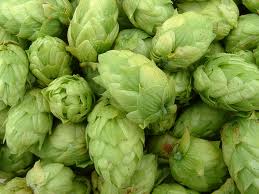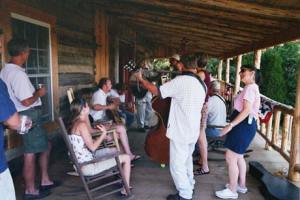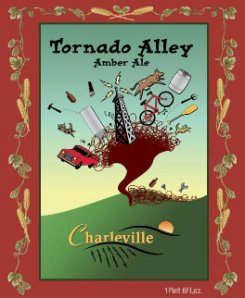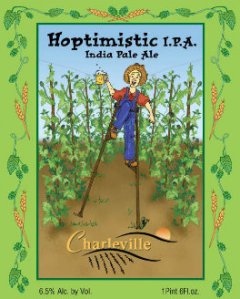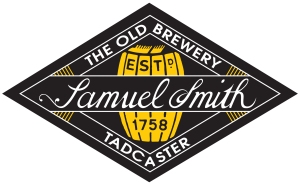Even though we can’t see each other, let me see a show of hands….How many of you were introduced to “craft beer” via a pint of Blue Moon with a slice of orange perched on the rim? I would guess that half of you have your hand in the air right now because Blue Moon Belgian White seems to be the leading “gateway beer” in the country. Remember when you first saw that tall, shapely glass moving about the bar with an orange cleverly calling out to you “order me next round. Wink.” The wink might be from the waitress not the orange, but you had so many that night, you can’t remember all the details. Anyway, the orange works in grabbing attention and it also gives you the ability to offer Blue Moon to people that claim not to like beer. The fruit allows you to present them with a wit bier disguised as a tropical cocktail.
Is There a Beer Doctor in the House?
 If Keith Villa would have continued with his original plan to become a pediatrician we may have never seen those oranges taking over pubs around the country. Villa is the founder and brewmaster at Blue Moon Brewing Company in Denver, Colorado and he was kind enough to fly in for Cicero’s Beer School to share stories and beer with the crowd. He really was very close to becoming a pediatrician, but luckily he saw a sign. No, literally a sign. Coors was looking for someone to work in their beer research department and Keith was intrigued enough to try it out. After a year, Coors gave him a ticket to Belgium so he could pursue his PhD in brewing. The Beer Doctor returned to Denver with the direction to create a new craft beer division and out sprang a Belgian white beer which now serves as the flagship beer for Blue Moon Brewing. (click the photos and logos for interviews with Keith and Blue Moon videos)
If Keith Villa would have continued with his original plan to become a pediatrician we may have never seen those oranges taking over pubs around the country. Villa is the founder and brewmaster at Blue Moon Brewing Company in Denver, Colorado and he was kind enough to fly in for Cicero’s Beer School to share stories and beer with the crowd. He really was very close to becoming a pediatrician, but luckily he saw a sign. No, literally a sign. Coors was looking for someone to work in their beer research department and Keith was intrigued enough to try it out. After a year, Coors gave him a ticket to Belgium so he could pursue his PhD in brewing. The Beer Doctor returned to Denver with the direction to create a new craft beer division and out sprang a Belgian white beer which now serves as the flagship beer for Blue Moon Brewing. (click the photos and logos for interviews with Keith and Blue Moon videos)
So when did the oranges become part of the beer? Orange peels have always been a part of the recipe for the beer, but in 1997, two years after the launch, Keith and his team decided that placing a slice of orange on the glass would highlight the flavor and add a little interest to the beer. Problem: bars in 1997 didn’t have oranges on hand. Solution: Blue Moon delivered a bag of oranges each week with the beer. Now the bars provide their own oranges, but you can thank Keith and Blue Moon for putting oranges on equal footing with lemons and limes.
been a part of the recipe for the beer, but in 1997, two years after the launch, Keith and his team decided that placing a slice of orange on the glass would highlight the flavor and add a little interest to the beer. Problem: bars in 1997 didn’t have oranges on hand. Solution: Blue Moon delivered a bag of oranges each week with the beer. Now the bars provide their own oranges, but you can thank Keith and Blue Moon for putting oranges on equal footing with lemons and limes.
When a Blue Moon isn’t a Blue Moon…
As we walked into class we were immersed in Blue Moon shirts, signage and schwag. The marketing group had arrived early and branded everything that would stand still and then some. I thought it was a good effort, but honestly was not that excited to drink the same beer four times while adding a few more squeezes of  orange each round. Let me be the first to say it, I was wrong. While the main line of beers does not fall too far from the orange tree, the good doctor showed that he has not forgotten his inner beer geek as he talked about Peanut Butter Ale and Chocolate Bacon Porter which uses 28 pounds of bacon. Both beers have represented Blue Moon at the Great American Beer Fest. And you thought Blue Moon was boring…shame on you.
orange each round. Let me be the first to say it, I was wrong. While the main line of beers does not fall too far from the orange tree, the good doctor showed that he has not forgotten his inner beer geek as he talked about Peanut Butter Ale and Chocolate Bacon Porter which uses 28 pounds of bacon. Both beers have represented Blue Moon at the Great American Beer Fest. And you thought Blue Moon was boring…shame on you.
Vintage Blonde Ale
This was the most talked about beer of the night and for good reason. Keith uses 100% wheat in the grain bill and adds chardonnay grape juice just before fermenting with lager yeast. The result is a hybrid of 51% beer and 49% wine bottled at 8.5% ABV that can be aged for 3-4 years. Cutting edge? Actually he made it first in 1995 and put the recipe on a shelf until 2006.
bottled at 8.5% ABV that can be aged for 3-4 years. Cutting edge? Actually he made it first in 1995 and put the recipe on a shelf until 2006.
He says– I get the grape juice right away and also an apple cider flavor. I would put if more in the wine world for me, but would be a great way to convert a white wine drinker to beer. I’m not sure if hops are even waived across the beer, but for good reason as they would get in the way.
She says– Tart, like apple cider or a sparkling wine. Since I’m not a big fan of white wine, this one didn’t resonate with me. I understand why some people would love it, and I will definitely tell my white-wine-loving friends to seek it out.
Blue Moon Belgian White
 He says– We sampled sans orange which is my preference anyway. A little creamy on the tongue, but overall a thin mouthfeel. Spicy nose with hints of citrus. Tart and sweet at the same time with a dry finish. While I first think of summer, it works in all seasons because of the dash of coriander in the beer.
He says– We sampled sans orange which is my preference anyway. A little creamy on the tongue, but overall a thin mouthfeel. Spicy nose with hints of citrus. Tart and sweet at the same time with a dry finish. While I first think of summer, it works in all seasons because of the dash of coriander in the beer.
She says– I think my first experience with this beer was at Churchill Downs during the 2006 Breeder’s Cup races. Eric was excited to see something different at the track and I actually tried something other than Bud that day. Funny how times have changed. What was once overpowering and strong now seems smooth and almost too easy for my palate.
Spring Blonde Wheat Ale
He says– This time lemon drives and the orange takes a backseat. The look is clearer than the flagship, but the same orange hue. It has a slight syrupy feel for some reason and a sticky finish for me. Not my favorite seasonal from Blue Moon, but well intended.
clearer than the flagship, but the same orange hue. It has a slight syrupy feel for some reason and a sticky finish for me. Not my favorite seasonal from Blue Moon, but well intended.
She says– Since I’m not a huge fan of anything tart, these beers were difficult for me to embrace. I do think many white wine drinking women will like them, especially on a hot summer night eating pool side. I did note the Belgian influence and some of the beers reminded me of a hefeweizen or a farmhouse ale, which is not my first choice in style preference.
Valencia Amber Ale
He says– This was the heaviest beer of the night, but was still in the session  beer category for most beer geeks. This is a secondary spring seasonal for Blue Moon, who knew that even existed. You won’t find it around here, but I will tell you that it uses Valencia orange peels and tastes very similar to the Belgian White. I enjoyed it more than the Spring Blonde and would vote for it to move to an autumn release as a sidekick to the pumpkin laced Harvest Moon.
beer category for most beer geeks. This is a secondary spring seasonal for Blue Moon, who knew that even existed. You won’t find it around here, but I will tell you that it uses Valencia orange peels and tastes very similar to the Belgian White. I enjoyed it more than the Spring Blonde and would vote for it to move to an autumn release as a sidekick to the pumpkin laced Harvest Moon.
She says– Looks more amber in color than the other beers and is much clearer. This would be my favorite of the night as it has more body and more flavor. The sweetness finally gave me a break from the tart citrus notes all night.
The Last Sip
Thank you to Keith Villa for taking the time to speak with us and help put a face and a story with the beer. His passion was on display all night and we left the class with a deeper appreciation for Blue Moon. On the horizon you should see a Farmhouse Red Ale under the Blue Moon banner along with a few other interesting styles. Let us know about your introduction to craft beer in the comment section. What was your gateway beer? Do you remember your first Blue Moon? Cheers!
face and a story with the beer. His passion was on display all night and we left the class with a deeper appreciation for Blue Moon. On the horizon you should see a Farmhouse Red Ale under the Blue Moon banner along with a few other interesting styles. Let us know about your introduction to craft beer in the comment section. What was your gateway beer? Do you remember your first Blue Moon? Cheers!
 About the Authors: Husband and wife Eric and Mimi have been attending beer school for about 3 years now and love every minute of it. Mimi was born and raised in St. Louis. Besides sitting down with a fabulous pint of beer, she enjoys gardening and spending time with her horse. Eric was born and raised in Texas. He enjoys sports, homebrewing and searching for the next great beer. A search he says he has been on for nearly a decade and one that will certainly never end. Mimi, on the other hand, has more recently discovered flavorful beer and is now proud to be called a hop-head. After having moved away for a few years, in 2007, this happy couple moved back to St. Louis and is enjoying all the St. Louis beer scene has to offer, especially Cicero’s Beer School. Cicero’s is lucky to have such an enthusiastic couple writing the beer school blog!
About the Authors: Husband and wife Eric and Mimi have been attending beer school for about 3 years now and love every minute of it. Mimi was born and raised in St. Louis. Besides sitting down with a fabulous pint of beer, she enjoys gardening and spending time with her horse. Eric was born and raised in Texas. He enjoys sports, homebrewing and searching for the next great beer. A search he says he has been on for nearly a decade and one that will certainly never end. Mimi, on the other hand, has more recently discovered flavorful beer and is now proud to be called a hop-head. After having moved away for a few years, in 2007, this happy couple moved back to St. Louis and is enjoying all the St. Louis beer scene has to offer, especially Cicero’s Beer School. Cicero’s is lucky to have such an enthusiastic couple writing the beer school blog!















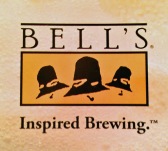





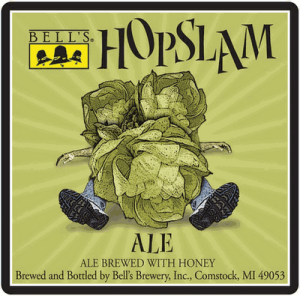
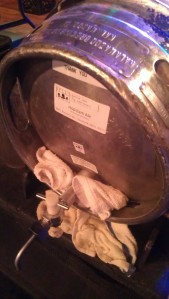
 I try not to make a habit of rhyming, especially in headlines, but the opportunity to rhyme “parachutes” doesn’t come around very often so I had to take a shot. Besides, it is actually relevant to our recap this week just stick with us to find out how. And the parachute reference also gives me an excuse to post a photo of Mimi at the National Free Fall Convention.
I try not to make a habit of rhyming, especially in headlines, but the opportunity to rhyme “parachutes” doesn’t come around very often so I had to take a shot. Besides, it is actually relevant to our recap this week just stick with us to find out how. And the parachute reference also gives me an excuse to post a photo of Mimi at the National Free Fall Convention. napkins, and finally the day is here…this time I promise, no crossed-fingers or take-backs…
napkins, and finally the day is here…this time I promise, no crossed-fingers or take-backs… might have told you to read it because inside those chapters you would discover what you are supposed to do in life. Well it turns out that Brian actually read it, and it worked. (See I told you I would get back to the parachute theme)
might have told you to read it because inside those chapters you would discover what you are supposed to do in life. Well it turns out that Brian actually read it, and it worked. (See I told you I would get back to the parachute theme) She says- Mirror Pond is the biggest seller for Deschutes. It’s made with 100% Cascade hops. I found it to be a light, very easy drinking ale. It had a slight bitter finish but not offensive. Mirror Pond would compliment a variety of foods.
She says- Mirror Pond is the biggest seller for Deschutes. It’s made with 100% Cascade hops. I found it to be a light, very easy drinking ale. It had a slight bitter finish but not offensive. Mirror Pond would compliment a variety of foods. nice roasty scent and flavor. This was a very drinkable porter that wasn’t too heavy. In fact, I thought it could even be sessionable. This would be a good one to offer to someone starting to explore darker craft beers. It wasn’t overpowering or filling, and had really nice chocolate notes. Brian suggested drinking it with BBQ and smoked meats. It would go well with chocolate desserts too. Well worth trying if you want a mild porter.
nice roasty scent and flavor. This was a very drinkable porter that wasn’t too heavy. In fact, I thought it could even be sessionable. This would be a good one to offer to someone starting to explore darker craft beers. It wasn’t overpowering or filling, and had really nice chocolate notes. Brian suggested drinking it with BBQ and smoked meats. It would go well with chocolate desserts too. Well worth trying if you want a mild porter. She says- This beer had a lot of different flavor profiles for a low IBU beer. It is brewed with 100% pilsner malts, beet sugar and Pomegranate Molasses. To add a further twist, they use a French Saison yeast and it is barrel aged using Rye & Pinot Noir barrels. It had a lovely light golden color and a slightly sweet aftertaste. If you like Quads, be sure to try this one.
She says- This beer had a lot of different flavor profiles for a low IBU beer. It is brewed with 100% pilsner malts, beet sugar and Pomegranate Molasses. To add a further twist, they use a French Saison yeast and it is barrel aged using Rye & Pinot Noir barrels. It had a lovely light golden color and a slightly sweet aftertaste. If you like Quads, be sure to try this one. blend and balance of pine and grapefruit tones. I know I’m going to try Hop Henge at home to see if it might rival my “go-to” IPA favorites.
blend and balance of pine and grapefruit tones. I know I’m going to try Hop Henge at home to see if it might rival my “go-to” IPA favorites.







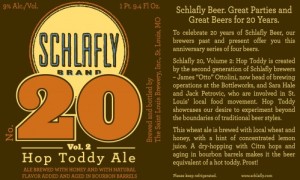
 About the Authors: Husband and wife Eric and Mimi have been attending beer school for about a year now and love every minute of it. Mimi was born and raised in St. Louis. Besides sitting down with a fabulous pint of beer, she enjoys gardening and spending time with her horse. Eric was born and raised in Texas. He enjoys sports and searching for the next great beer. A search he says he has been on for five years and one that will certainly never end. Mimi, on the other hand, just realized beer actually has flavor about a year ago. After having moved away for a few years, in 2007, this happy couple moved back to St. Louis and is enjoying all the St. Louis beer scene has to offer, especially Cicero’s Beer School. Cicero’s is lucky to have such an enthusiastic couple writing the beer school blog!
About the Authors: Husband and wife Eric and Mimi have been attending beer school for about a year now and love every minute of it. Mimi was born and raised in St. Louis. Besides sitting down with a fabulous pint of beer, she enjoys gardening and spending time with her horse. Eric was born and raised in Texas. He enjoys sports and searching for the next great beer. A search he says he has been on for five years and one that will certainly never end. Mimi, on the other hand, just realized beer actually has flavor about a year ago. After having moved away for a few years, in 2007, this happy couple moved back to St. Louis and is enjoying all the St. Louis beer scene has to offer, especially Cicero’s Beer School. Cicero’s is lucky to have such an enthusiastic couple writing the beer school blog!







